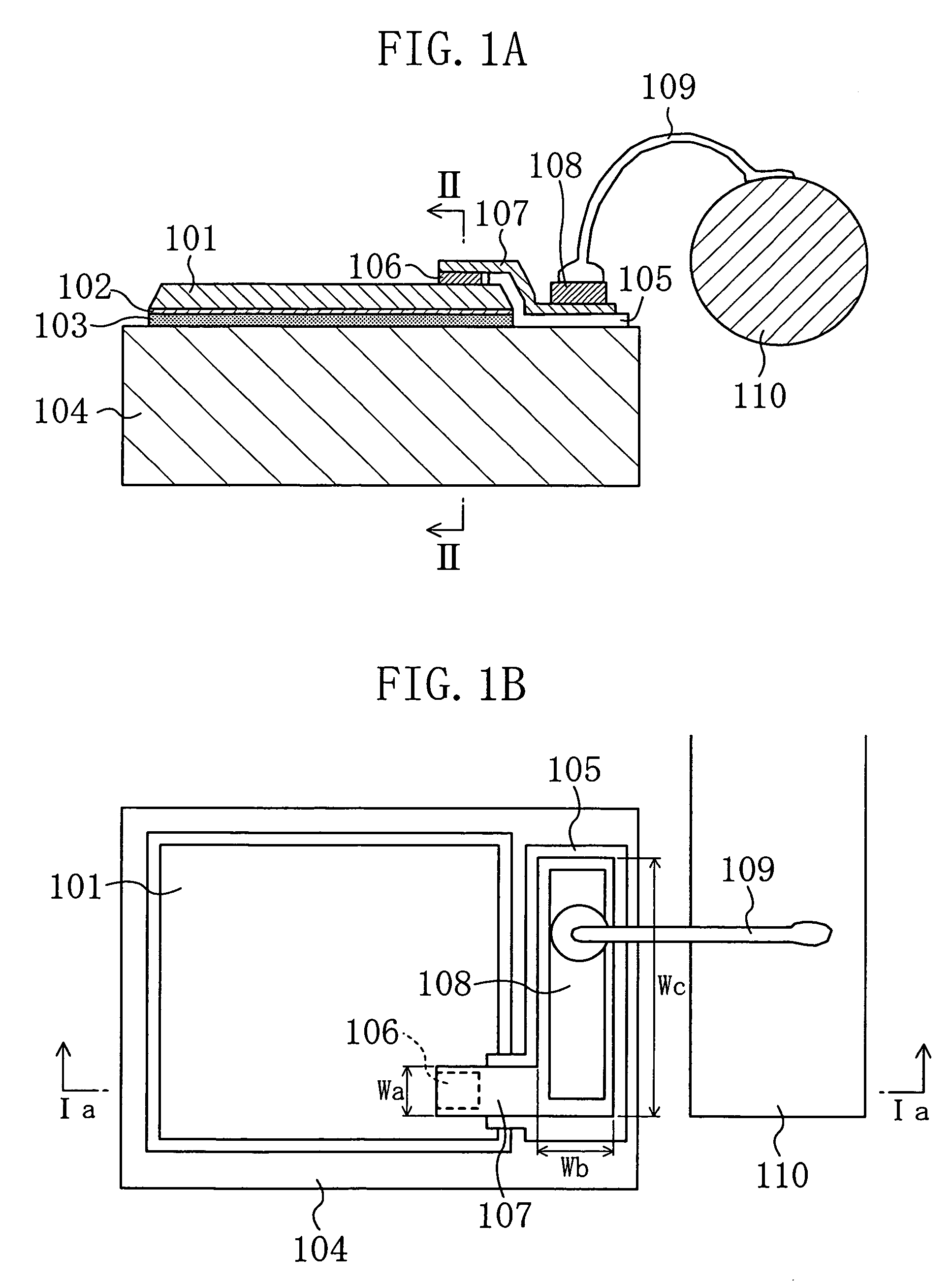Semiconductor light-emitting device, method for fabricating the same, lighting module and lighting apparatus having semiconductor light-emitting device
a semiconductor and light-emitting device technology, applied in the direction of semiconductor devices for light sources, lighting and heating apparatus, solid-state devices, etc., can solve the problems of thermal saturation of light output, poor heat dispersion, and the light-emitting device using the first feeding method cannot achieve sufficient heat dispersion, so as to enhance the yield of semiconductor light-emitting devices, and prevent cracking or chipping
- Summary
- Abstract
- Description
- Claims
- Application Information
AI Technical Summary
Benefits of technology
Problems solved by technology
Method used
Image
Examples
first embodiment
[0116] First, referring to FIGS. 1A and 1B, the structure of a semiconductor light-emitting device according to a first embodiment of the present invention will be described.
[0117]FIGS. 1A and 1B are diagrams showing the structure of the semiconductor light-emitting device according to the first embodiment of the present invention. Note that FIG. 1A is a cross sectional view showing the structure of the semiconductor light-emitting device according to the first embodiment of the present invention, specifically, a cross sectional view taken along line Ia-Ia of FIG. 1B and FIG. 1B is a plan view showing the same.
[0118] As illustrated in FIG. 1A, a p-side ohmic electrode 102, a pn junction structure 101, and an n-side ohmic electrode 106 are sequentially formed on a support 104 made of CuW with a fusion material 103 interposed between the support 104 and the p-side ohmic electrode 102. The pn junction structure 101 has a thickness of 5 μm and a 350 μm square shape, and comprises a se...
second embodiment
[0177] Now, referring to FIGS. 6A and 6B, the structure of a semiconductor light-emitting device according to a second embodiment of the present invention will be described.
[0178]FIGS. 6A and 6B are diagrams showing the structure of the semiconductor light-emitting device according to the second embodiment of the present invention. FIG. 6A is a cross sectional view showing the structure of the semiconductor light-emitting device according to the second embodiment of the present invention, specifically, a cross sectional view taken along line VIa-VIa of FIG. 6B and FIG. 6B is a plan view showing the same.
[0179] As illustrated in FIG. 6A, a p-side ohmic electrode 202, a pn junction structure 201, and an n-side ohmic electrode 205 are sequentially formed on a support 203 which has a thickness of 100 μm and is made of Au. The pn junction structure 201 has a thickness of 5 μm and a 350 μm square shape, and comprises a semiconductor layer formed by sequentially depositing a p-type galli...
third embodiment
[0227] Now, referring to FIG. 9, the structure of a semiconductor light-emitting device according to a third embodiment of the present invention will be described.
[0228]FIG. 9 is a plan view of the structure of the semiconductor light-emitting device according to the third embodiment of the present invention.
[0229] As being identical with the cross sectional view of the structure of the semiconductor light-emitting device according to the first embodiment, the cross sectional view of the structure of the semiconductor light-emitting device according to the third embodiment of the present invention is omitted here. In FIG. 9, the same structural elements as in the semiconductor light-emitting device according to the first embodiment of the present invention are denoted by the same reference numerals. In the third embodiment, the same description as in the semiconductor light-emitting device according to the first embodiment of the present invention will not be repeated.
[0230] As i...
PUM
 Login to View More
Login to View More Abstract
Description
Claims
Application Information
 Login to View More
Login to View More - R&D
- Intellectual Property
- Life Sciences
- Materials
- Tech Scout
- Unparalleled Data Quality
- Higher Quality Content
- 60% Fewer Hallucinations
Browse by: Latest US Patents, China's latest patents, Technical Efficacy Thesaurus, Application Domain, Technology Topic, Popular Technical Reports.
© 2025 PatSnap. All rights reserved.Legal|Privacy policy|Modern Slavery Act Transparency Statement|Sitemap|About US| Contact US: help@patsnap.com



